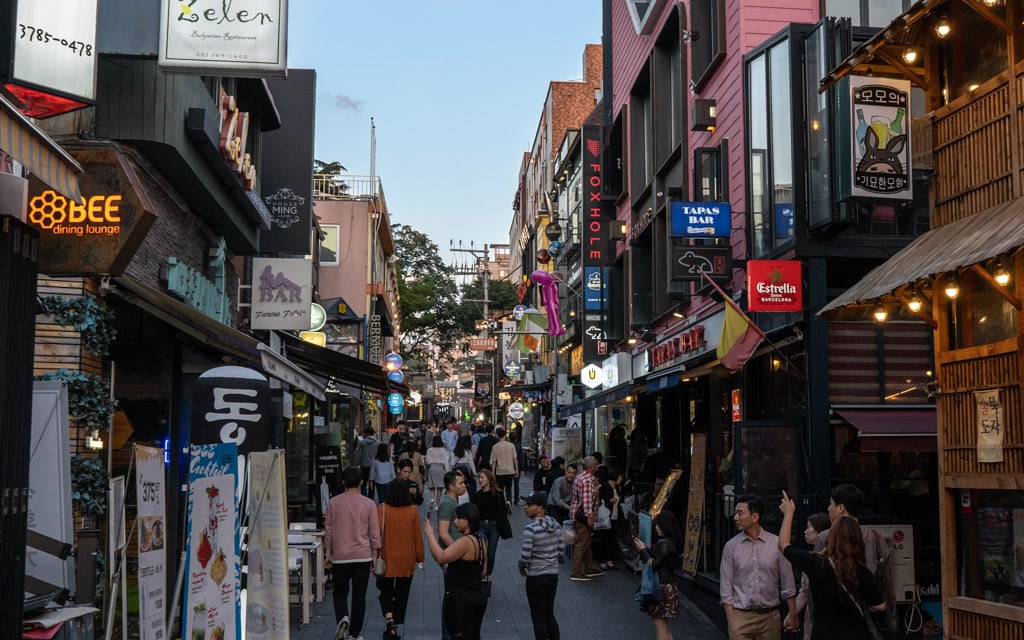
Itaewon is foreigner friendly international district popular for international cuisine restaurants, shops, bars, and clubs that cater to foreigners. The district is located in Yongsan-gu just south of Myeongdong and north of the Hangang River. The best time to visit Itaewon is during the evenings and on the weekends when locals, foreigners, and American soldiers flock here to shop, eat, and party.
Before the second World War, this area was mainly residential and occupied by Japanese colonialists. After the war, the Japanese were forced out and replaced by Americans soldiers who set up base nearby. Itaewon, meaning “large pear tree,” sprang up after the Korean War for wealthy soldiers that resided in the surrounding area.
American soldiers from the base, along with travelers from around the world, have flocked here over the years for its party atmosphere and international flavor unique to South Korea. Itaewon is the one place in Seoul where you will be surrounded not by Koreans, but mostly by foreigners.
Itaewon saw an increase in Western and Japanese tourists during and after the 1988 Summer Olympics in Seoul as English and Japanese are commonly spoken on the streets here. This is still true to this day except for the fact that many more languages are spoken here making Itaewon an extremely foreign friendly and diverse neighborhood.
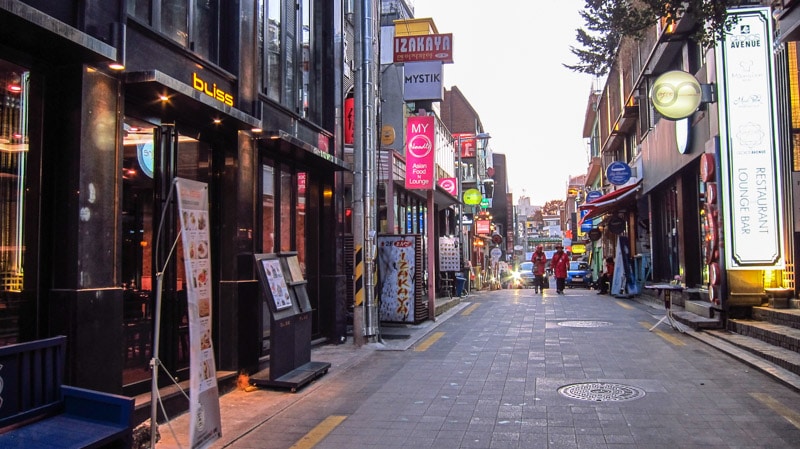
Yongsan Garrison, headquarters to the U.S. Military, is located just to the west of Itaewon. Many of the restaurants, bars, and shops rely on the business of military personnel. Plans to move the base to a new and larger base in Pyeongtaek, south of Seoul, have begun. The move was suppose to happen in 2014 but has since been pushed back to 2019. When the base moves, military personnel clientele will also disappear which will cause local businesses to be greatly affected financially.
As U.S military personnel numbers decrease, the number of English teachers from the United States, United Kingdom, and Australia have increased. There has also been an increase in the number of migrant workers from Southeast and South Asia.
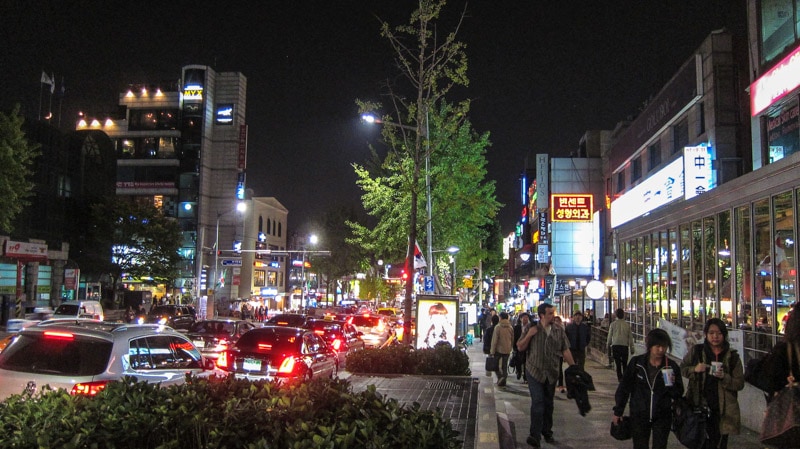
In the past, most residents of Seoul avoided Itaewon for its bad reputation as a rowdy and seedy district popular with international visitors and American soldiers looking to party and cause trouble. In the past decade though, the area has diversified, cleaned up, and new businesses have moved in.
Upscale restaurants and eateries have moved in replacing the once seedy area. Because of this, local residents have returned to the area to shop at mid and high range shops and eat in one of the many diverse and classy restaurants. Restaurants and stores now line the main drag and back alleys of Itaewon. Literally every single building that lines the main street is either a shop, bar, or restaurant.
Visitors will be surprised to find a large selection restaurants serving authentic international cuisines of Turkey, Pakistan, Mexico, Czech Republic, and more. The majority of these restaurants are found along the street behind the Hamilton Hotel near exit two of Itaewon Station.
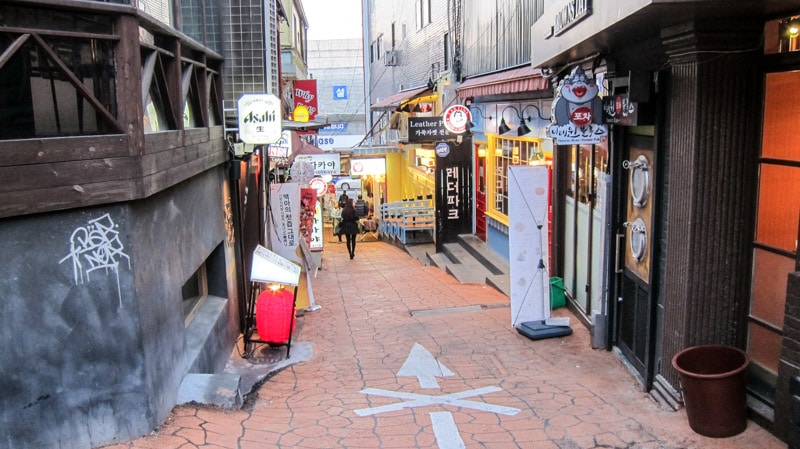
For those who want to experience more of the area, venture off the main street down one of the many smaller alleyways to find street vendors and a large assortments of shops, restaurants, bars, and clubs.
Those who venture out further up the hill from Itaewon Station will find their way to the once seedy area known as “Hooker Hill.” This area was once packed with brothels set up specifically for U.S. military customers. Many, but not all, of these establishments have since been closed. The area since has been transformed into the center of the Korean gay community. Itaewon is one of the only places in Seoul that homosexuality is openly tolerated.
Itaewon Information
Hours
24 hours
Admission
Free
How to Get Here
Take Subway Line 6 to Itaewon Station (Exit 1-4).
Itaewon Video
Map
Additional Resources
Viator by TripAdvisor
Viator is a popular online platform that helps travelers book tours, activities, and unique experiences worldwide, including in Seoul. It connects users with a wide selection of options – from sightseeing tours to cultural events and outdoor adventures – all offered by local providers.
Klook
Klook offers discounted tickets and reservations for various attractions and services in Seoul, from theme parks and museums to tours and transportation options.
Rakuten
Save money while exploring Seoul with Rakuten's cashback program. Book your hotels or other services through Rakuten and enjoy cashback rewards and exclusive deals.
If you sign up using the link below, you could earn $30 cashback on your first purchase over $30.
Book Recommendations
For an immersive guide to Seoul, many travelers choose to bring a book along. Fodor's Seoul, for example, offers detailed recommendations on sights, restaurants, maps, and travel tips.
Nearby Sights
Seoul Central Mosque
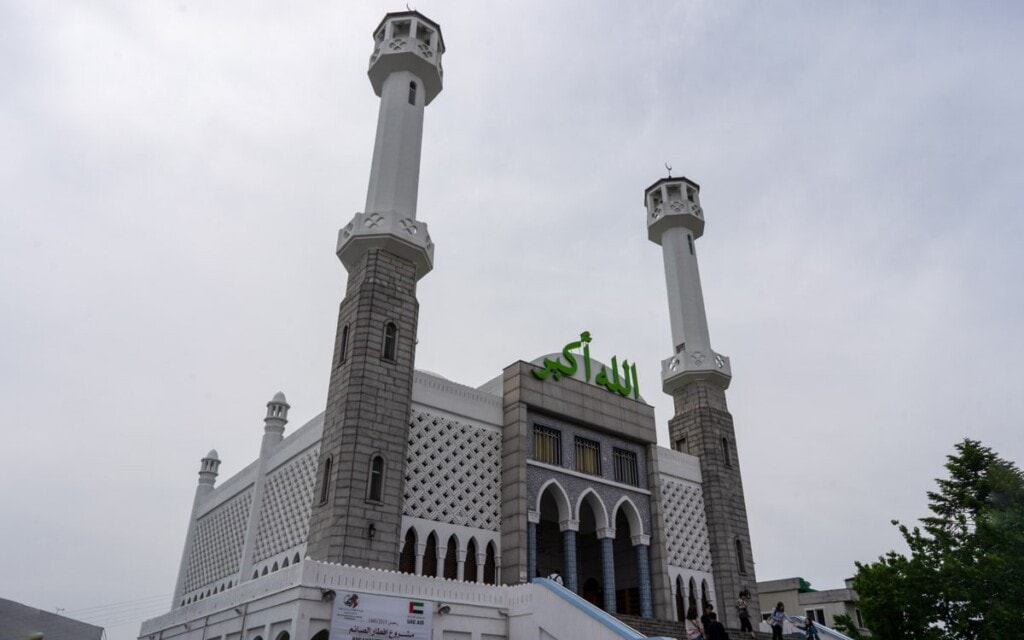
Seoul Central Mosque is Korea's first and Seoul's only mosque or masjid. It is located at the top of a hill above the busy neighborhood of Itaewon. Many residents visit on weekends to learn about Islam. Lectures can be heard in Korean, English, and Arabic. In 1974, construction on the mosque began with help of donations from Islamic countries.
Leeum, Samsung Museum of Art
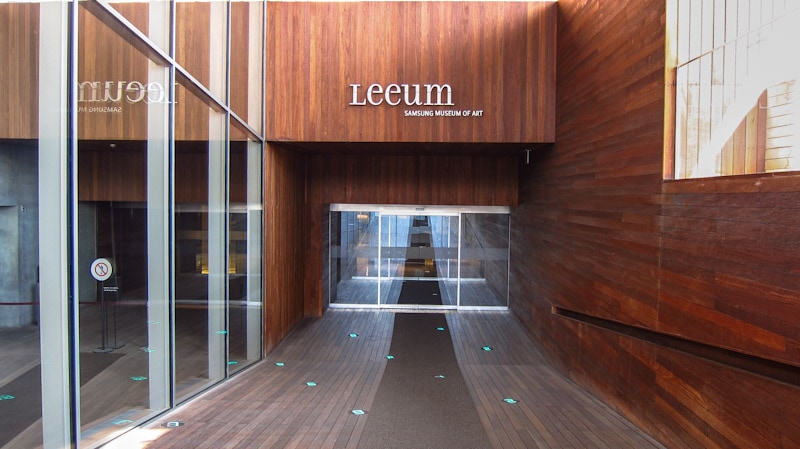
Leeum, Samsung Museum Of Art is a fascinating museum that focuses on traditional and modern works of art by artists from Korea and from around the world. The museum and its galleries, some of the most esteemed in all of Korea, opened in 2004. Leeum, Samsung Museum Of Art is located just east of the international nightlife area of Itaewon.
Haebangchon
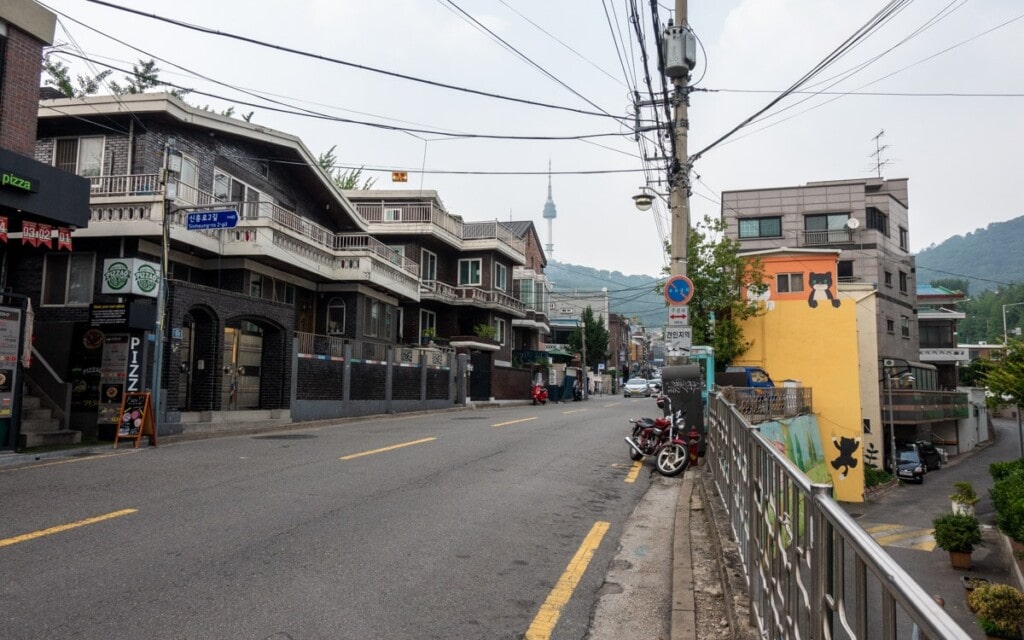
Haebangchon, also known as HBC, is a neighborhood located in the Yongsan-gu District of Seoul, Korea.
War Memorial of Korea
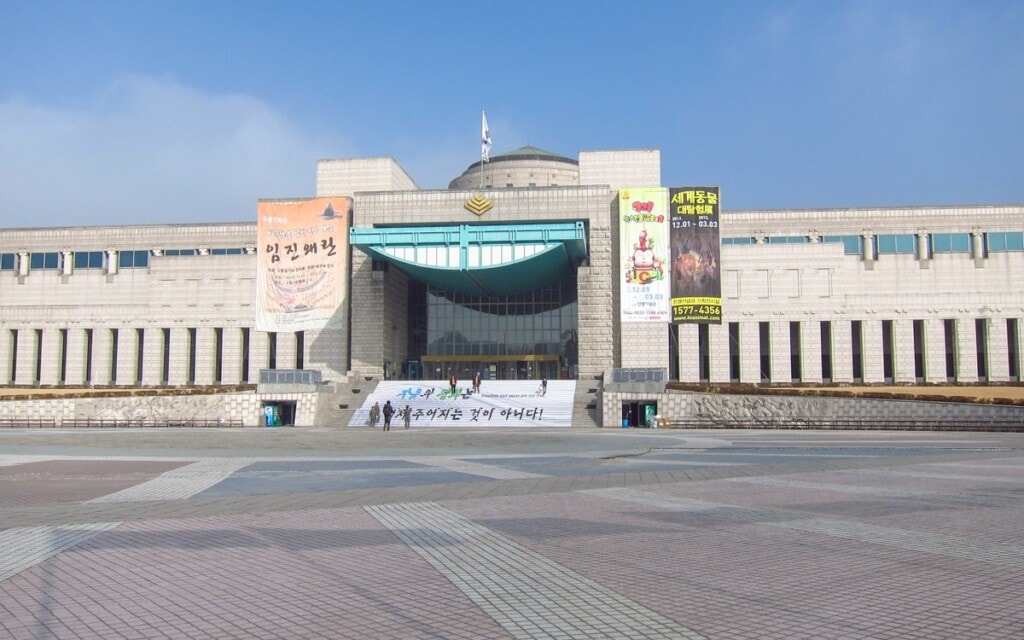
The War Memorial of Korea is a large memorial that commemorates the victims of the Korean War and other wars throughout the history of the country. When the memorial was opened on June 10, 1994 it was the largest of its kind in the world. It took the hard work and research of countless numbers of experts from all different fields to make this museum possible.
National Museum of Korea
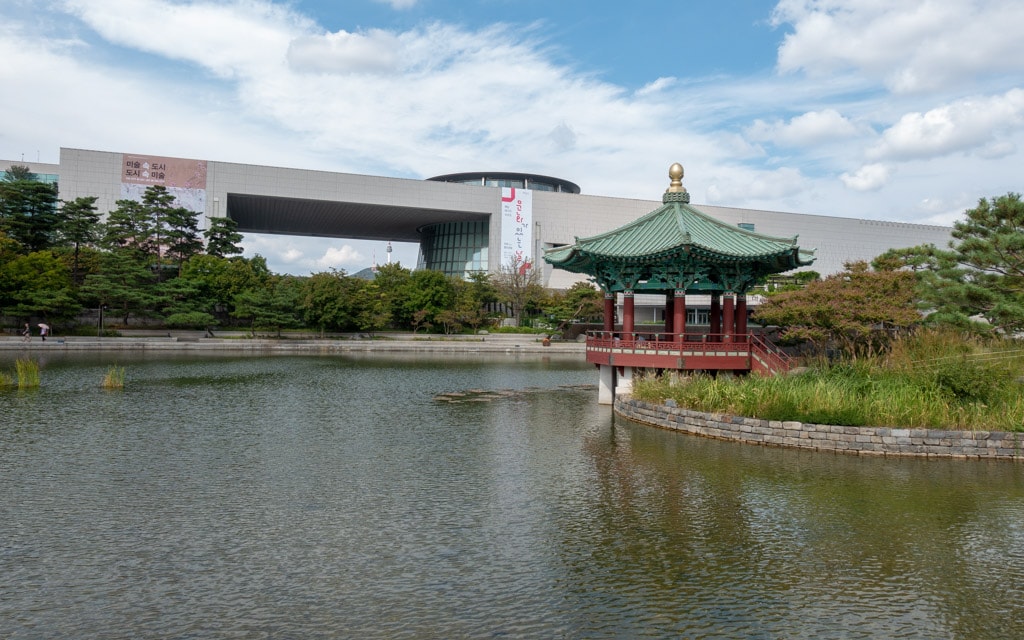
The National Museum of Korea is the largest museum in Korea. It showcases important cultural assets of Korea from prehistoric times through modern day. The museum opened on October 28, 2005 on the grounds of Yongsan Family Park. Many of the pieces found at the National Museum Of Korea today were first located at the Imperial Household Museum at Changgyeonggung Palace.
Yongsan Family Park
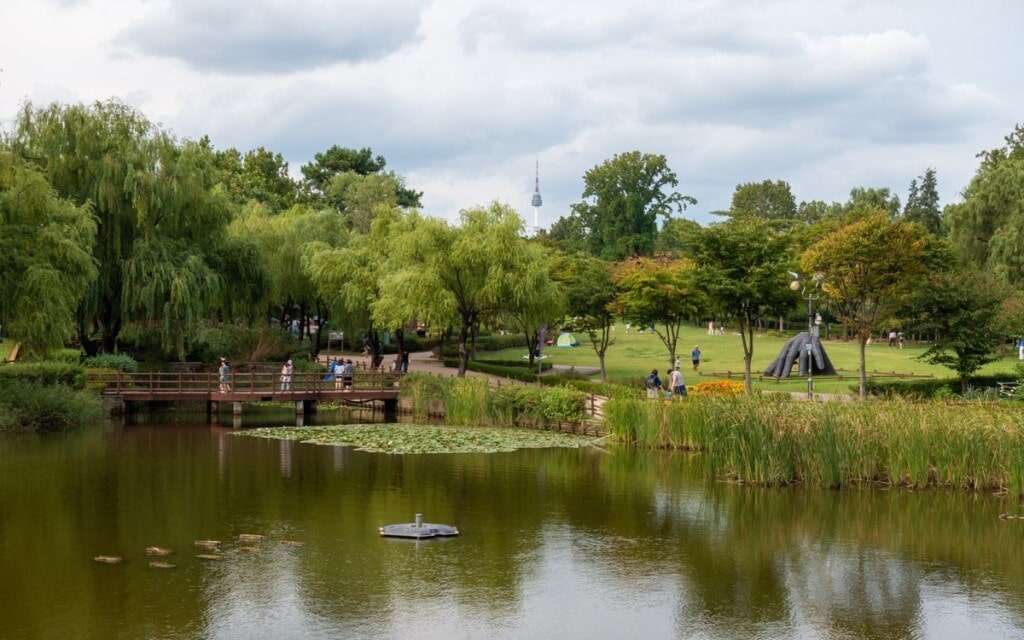
Once a golf course for the United States military, Yongsan Family Park has become an oasis and a peaceful escape from the hustle and bustle of the city. The large park, which features wonderful wide open green spaces and trees, is situated right next to the National Museum of Korea just south of Mt.
Last Updated on Mar 14, 2025